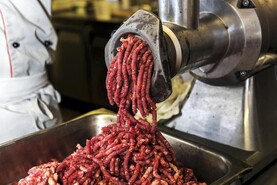The current weather is giving an excellent opportunity to get first-cut silage and hay saved in excellent conditions.
However, there are a number of practices where normal management may need to be changed.
One such area is applying pour-ons on sheep.
Peak daytime temperatures running into the mid-20s bring the risk of product being evaporated if sheep are exposed in the immediate period post-application.
As such, the optimum practice is to carry out treatment late in the evening or where sheep can be retained indoors for a period to allow product to bind to the fleece.
Fly activity
While flies will be less active during peak temperatures, activity will still be relatively high in sheltered areas, posing the risk of flystrike and nuisance flies.
There are some other practices that should also be considered.
While temperatures are not extreme in an Irish context, it is worth taking care where transporting sheep in trailers.
This is especially the case if unshorn ewes are transported with lambs at a high stocking rate, with a risk of lambs succumbing to heat stress.
Likewise, it is prudent to avoid working dogs in peak daytime temperatures and to offer plenty of rest breaks and regular access to clean fresh water.






 This is a subscriber-only article
This is a subscriber-only article










SHARING OPTIONS: